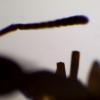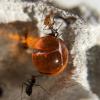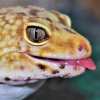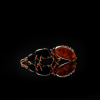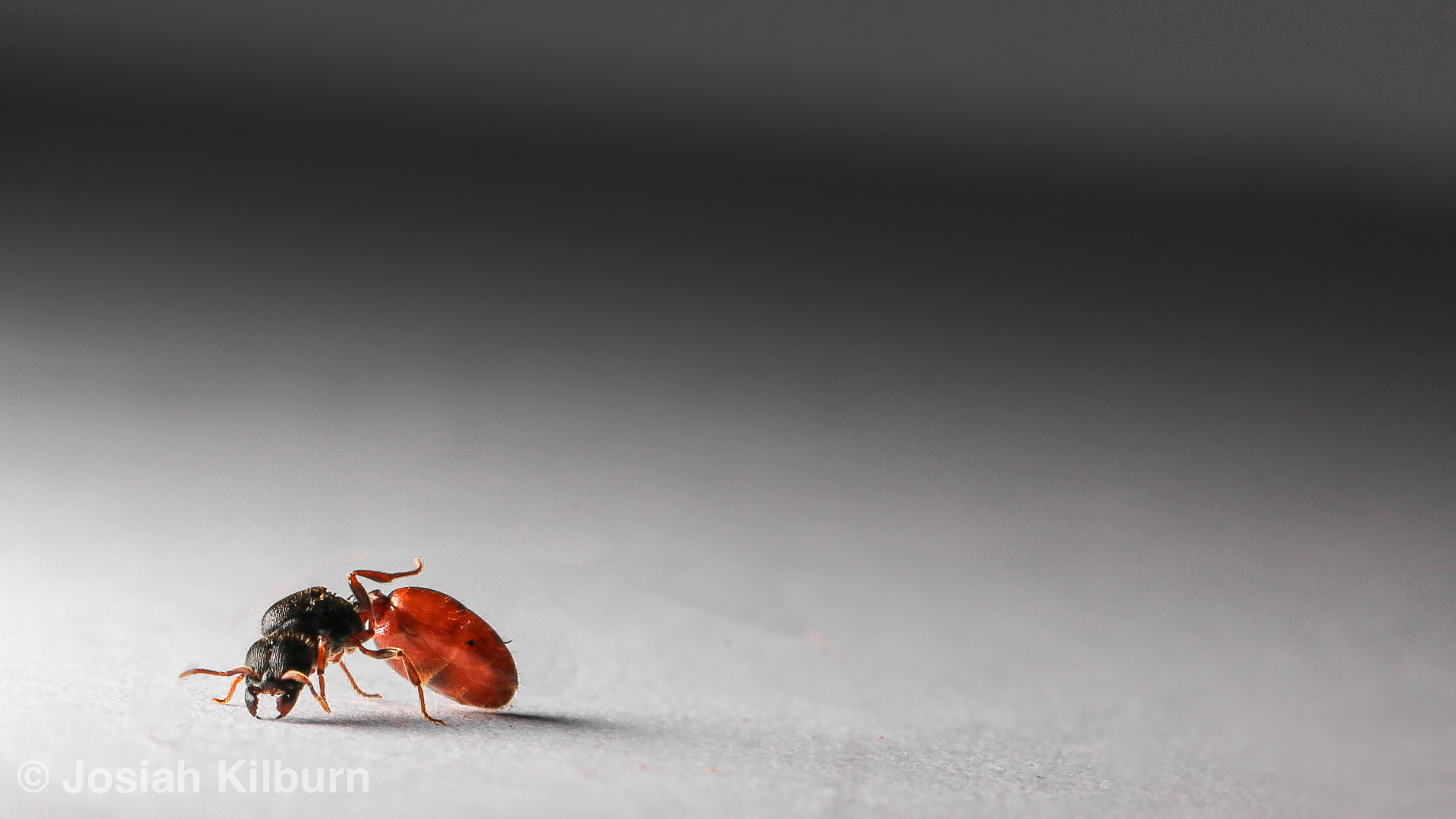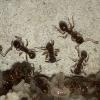- Formiculture.com
- Forums
- Gallery
- Members
- Member Map
- Chat
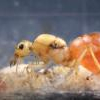
55 replies to this topic
#21
 Offline
-
Posted April 2 2019 - 1:35 PM
Offline
-
Posted April 2 2019 - 1:35 PM
You don’t have one for clarithorax!!! Durum chhhhhhh......

#22
 Offline
-
Posted April 2 2019 - 5:42 PM
Offline
-
Posted April 2 2019 - 5:42 PM
Now write a paper describing them in detail using scientific language and submit it to a journal so that you can actually name it.
Edited by Martialis, April 2 2019 - 5:46 PM.
- LC3, TennesseeAnts and MinigunL5 like this
Spoiler
#23
 Offline
-
Posted April 2 2019 - 6:32 PM
Offline
-
Posted April 2 2019 - 6:32 PM
I say Camponotus californicus.
- Straywolf94 likes this
My Main Journal | My Neivamyrmex Journal | My Ant Adoption | My YouTube
Join the TennesseeAnts Discord Server! https://discord.gg/JbKwPgs
#24
 Offline
-
Posted April 3 2019 - 1:14 AM
Offline
-
Posted April 3 2019 - 1:14 AM
Potential Names
Camponotus fatassicus
Camponotus wumbo
Camponotus extra large
Can you supersize that camponutus?
My 500 pound camponotus
Camponutus Formiculture
Camponotus fatassicus
Camponotus wumbo
Camponotus extra large
Can you supersize that camponutus?
My 500 pound camponotus
Camponutus Formiculture
- Somethinghmm and Antennal_Scrobe like this
#25
 Offline
-
Posted April 3 2019 - 1:54 AM
Offline
-
Posted April 3 2019 - 1:54 AM
ITS D GIGAS
#26
 Offline
-
Posted April 3 2019 - 8:29 AM
Offline
-
Posted April 3 2019 - 8:29 AM
Formiculture does song good...
but I’m going with Nurbs or Nurbert
but I’m going with Nurbs or Nurbert
#27
 Offline
-
Posted April 3 2019 - 9:04 AM
Offline
-
Posted April 3 2019 - 9:04 AM
Camponotus californicus. Camponotus formiture. Camponotus Nurbrew. Camponotus tanos, camponotus titan. And my fav. Camponotus Athos. Athos was a greek giant who created mountains.
Edited by anttics, April 3 2019 - 9:08 AM.
#28
 Offline
-
Posted April 3 2019 - 9:06 AM
Offline
-
Posted April 3 2019 - 9:06 AM
Camponotus nurbancensis
There you have it
- Ants_Dakota likes this
I accidentally froze all my ants
#29
 Offline
-
Posted April 3 2019 - 2:31 PM
Offline
-
Posted April 3 2019 - 2:31 PM
Just go with WNC
Weird-named Camponotus
Weird-named Camponotus
#32
 Offline
-
Posted January 29 2020 - 7:02 PM
Offline
-
Posted January 29 2020 - 7:02 PM
update? has this been classified yet, the coloration totally reminds me of Carebara longii. Totally different ant but the color scheme is almost identical.
From what I know about describing species, here's my relayed info,
if you were to describe the species and name it after formiculture (which might be difficult) it would likely be called formiculturii, formiculturae, or formicultae. If we were to name it after nurbs ants it would probably be called nurbsii or something similar, but nurbs would have to approve of him being a benefactor. A behavioral review would have to be published, and holotypes would have to be established. luckily they already exist! but It would be beneficial to have extra type specimens for the study.
If you guys are interested, I need to start writing some papers soon. I might reach out to some experts to get this species described, but I would need specimens for a type collection. Anyone know if there are any males out there?
TLDR (if you're really that lazy)
Could be named
Camponotus formiculturii
Camponotus formiculturae
Camponotus nurbsii
(these might be improperly conjugated, I'll update them once I've made sure)
I would get it described but I'd need specimens of workers, queen, and probably a male. Or a location that has these species.
Edited by AntHUB, January 29 2020 - 7:33 PM.
- Antennal_Scrobe likes this
President & founder of LHS Entomology Club, (available on discord) Check out my photography website! https://www.armyofinsects.com/ Email me with questions
at jk@uglyorangetruck.com (funny email, I know)
#33
 Offline
-
Posted January 29 2020 - 7:04 PM
Offline
-
Posted January 29 2020 - 7:04 PM
I checked, no classification yet, all literature is seemingly missing. its like an odd cover up.
- Antennal_Scrobe likes this
President & founder of LHS Entomology Club, (available on discord) Check out my photography website! https://www.armyofinsects.com/ Email me with questions
at jk@uglyorangetruck.com (funny email, I know)
#34
 Offline
-
Posted January 29 2020 - 7:21 PM
Offline
-
Posted January 29 2020 - 7:21 PM
There are at least 4 undescribed Myrmica species in my state, and at least 2 undescribed Aphaenogaster. While the Aphaenogaster are part of a complex and impossible to distinguish, the Myrmica are all visually distinctive, including one whole undescribed species group. The undescribed Myrmica species actually do have names. M. evanida is like the described species M. americana but has a less prominent lamella (spike or ridge thing) on the antenna, and is usually bright orange. M. sculptilis has prominent exoskeleton ridges which have a distinctive round cross section, and M. smithana, which is the only other member of the sculptilis group, differs in the way the bases of its antennae are covered by the exoskeleton. Whether its antennal sockets are more or less enclosed, I don't remember. The remaining species is related to Myrmica fracticornis and is named, though I do not know the full name; all of these species are also referred to as "AF-eva", "AF-scu" etc, and for the fourth species, I only know the abbreviation, which is "AF-sub".
Currently keeping:
Tetramorium immigrans, Pogonomyrmex occidentalis
Myrmica punctiventris, Formica subsericea
Formica pallidefulva, Aphaeogaster cf. rudis
Camponotus pennsylvanicus
Camponotus nearcticus
Crematogaster cerasi
Temnothorax ambiguus
Prenolepis imparis
#35
 Offline
-
Posted January 29 2020 - 8:41 PM
Offline
-
Posted January 29 2020 - 8:41 PM
There are at least 4 undescribed Myrmica species in my state, and at least 2 undescribed Aphaenogaster. While the Aphaenogaster are part of a complex and impossible to distinguish, the Myrmica are all visually distinctive, including one whole undescribed species group. The undescribed Myrmica species actually do have names. M. evanida is like the described species M. americana but has a less prominent lamella (spike or ridge thing) on the antenna, and is usually bright orange. M. sculptilis has prominent exoskeleton ridges which have a distinctive round cross section, and M. smithana, which is the only other member of the sculptilis group, differs in the way the bases of its antennae are covered by the exoskeleton. Whether its antennal sockets are more or less enclosed, I don't remember. The remaining species is related to Myrmica fracticornis and is named, though I do not know the full name; all of these species are also referred to as "AF-eva", "AF-scu" etc, and for the fourth species, I only know the abbreviation, which is "AF-sub".
Myrmica classification is just messed up. I say this about a lot of genera, but it is in desperate need of a revision. I came across this large queen in Burtchville, Michigan a few years ago, and when I finally got around to keying her a few weeks ago, do you know what ridiculous name the species had? Freaking, Myrmica sp. "sculp"! What kind of a name is "sculp"? The sculpture of that species isn't even that noticeable! Good thing is, I don't think the species has ever been found in Michigan before, so new state record!
As for my vote for the name of Camponotus us-ca02, I'm gonna go with Camponotus dichromus, coming from the Greek word for bicolored. I know it's kind of stupid, considering that many Tanaemyrmex are bicolored like this, but hey, most scientific names aren't taken very seriously. I mean, Monomorium monomorium? Strumigenys (coming from the Latin word struma, meaning "a glandular swelling" and the Greek word genys, meaning "jaw," which isn't very fitting as only species within the mandibularis complex fit that description)? Freaking, Han solo? I think Camponotus dichromus sounds pretty nice, though I know the chances are astronomically low that the species will be gifted with that name when it is finally described. It would be pretty cool if it were though, or at least if some species was named Camponotus dichromus.
- Antennal_Scrobe likes this
Currently Keeping:
Camponotus chromaiodes, Camponotus nearcticus, Stigmatomma pallipes, Strumigenys brevisetosa, Strumigenys clypeata, Strumigenys louisianae, Strumigenys membranifera, Strumigenys reflexa, Strumigenys rostrata
#36
 Offline
-
Posted January 30 2020 - 5:03 AM
Offline
-
Posted January 30 2020 - 5:03 AM
You must have found Myrmica sculptilis then!
- Ferox_Formicae likes this
Currently keeping:
Tetramorium immigrans, Pogonomyrmex occidentalis
Myrmica punctiventris, Formica subsericea
Formica pallidefulva, Aphaeogaster cf. rudis
Camponotus pennsylvanicus
Camponotus nearcticus
Crematogaster cerasi
Temnothorax ambiguus
Prenolepis imparis
#37
 Offline
-
Posted January 30 2020 - 7:06 AM
Offline
-
Posted January 30 2020 - 7:06 AM
You must have found Myrmica sculptilis then!
Ah! Neat!
- Antennal_Scrobe likes this
Currently Keeping:
Camponotus chromaiodes, Camponotus nearcticus, Stigmatomma pallipes, Strumigenys brevisetosa, Strumigenys clypeata, Strumigenys louisianae, Strumigenys membranifera, Strumigenys reflexa, Strumigenys rostrata
#38
 Offline
-
Posted January 30 2020 - 9:25 AM
Offline
-
Posted January 30 2020 - 9:25 AM
There are at least 4 undescribed Myrmica species in my state, and at least 2 undescribed Aphaenogaster. While the Aphaenogaster are part of a complex and impossible to distinguish, the Myrmica are all visually distinctive, including one whole undescribed species group. The undescribed Myrmica species actually do have names. M. evanida is like the described species M. americana but has a less prominent lamella (spike or ridge thing) on the antenna, and is usually bright orange. M. sculptilis has prominent exoskeleton ridges which have a distinctive round cross section, and M. smithana, which is the only other member of the sculptilis group, differs in the way the bases of its antennae are covered by the exoskeleton. Whether its antennal sockets are more or less enclosed, I don't remember. The remaining species is related to Myrmica fracticornis and is named, though I do not know the full name; all of these species are also referred to as "AF-eva", "AF-scu" etc, and for the fourth species, I only know the abbreviation, which is "AF-sub".
Myrmica classification is just messed up. I say this about a lot of genera, but it is in desperate need of a revision. I came across this large queen in Burtchville, Michigan a few years ago, and when I finally got around to keying her a few weeks ago, do you know what ridiculous name the species had? Freaking, Myrmica sp. "sculp"! What kind of a name is "sculp"? The sculpture of that species isn't even that noticeable! Good thing is, I don't think the species has ever been found in Michigan before, so new state record!
As for my vote for the name of Camponotus us-ca02, I'm gonna go with Camponotus dichromus, coming from the Greek word for bicolored. I know it's kind of stupid, considering that many Tanaemyrmex are bicolored like this, but hey, most scientific names aren't taken very seriously. I mean, Monomorium monomorium? Strumigenys (coming from the Latin word struma, meaning "a glandular swelling" and the Greek word genys, meaning "jaw," which isn't very fitting as only species within the mandibularis complex fit that description)? Freaking, Han solo? I think Camponotus dichromus sounds pretty nice, though I know the chances are astronomically low that the species will be gifted with that name when it is finally described. It would be pretty cool if it were though, or at least if some species was named Camponotus dichromus.
seriously i have a question, how many new ant state records have your found ferox
- Antennal_Scrobe likes this
#39
 Offline
-
Posted January 30 2020 - 12:09 PM
Offline
-
Posted January 30 2020 - 12:09 PM
There are at least 4 undescribed Myrmica species in my state, and at least 2 undescribed Aphaenogaster. While the Aphaenogaster are part of a complex and impossible to distinguish, the Myrmica are all visually distinctive, including one whole undescribed species group. The undescribed Myrmica species actually do have names. M. evanida is like the described species M. americana but has a less prominent lamella (spike or ridge thing) on the antenna, and is usually bright orange. M. sculptilis has prominent exoskeleton ridges which have a distinctive round cross section, and M. smithana, which is the only other member of the sculptilis group, differs in the way the bases of its antennae are covered by the exoskeleton. Whether its antennal sockets are more or less enclosed, I don't remember. The remaining species is related to Myrmica fracticornis and is named, though I do not know the full name; all of these species are also referred to as "AF-eva", "AF-scu" etc, and for the fourth species, I only know the abbreviation, which is "AF-sub".
Myrmica classification is just messed up. I say this about a lot of genera, but it is in desperate need of a revision. I came across this large queen in Burtchville, Michigan a few years ago, and when I finally got around to keying her a few weeks ago, do you know what ridiculous name the species had? Freaking, Myrmica sp. "sculp"! What kind of a name is "sculp"? The sculpture of that species isn't even that noticeable! Good thing is, I don't think the species has ever been found in Michigan before, so new state record!
As for my vote for the name of Camponotus us-ca02, I'm gonna go with Camponotus dichromus, coming from the Greek word for bicolored. I know it's kind of stupid, considering that many Tanaemyrmex are bicolored like this, but hey, most scientific names aren't taken very seriously. I mean, Monomorium monomorium? Strumigenys (coming from the Latin word struma, meaning "a glandular swelling" and the Greek word genys, meaning "jaw," which isn't very fitting as only species within the mandibularis complex fit that description)? Freaking, Han solo? I think Camponotus dichromus sounds pretty nice, though I know the chances are astronomically low that the species will be gifted with that name when it is finally described. It would be pretty cool if it were though, or at least if some species was named Camponotus dichromus.
seriously i have a question, how many new ant state records have your found ferox
Only a few. Gnamptogenys triangularis, Pseudomyrmex leptosus, and Strumigenys silvestrii from South Carolina, Hypoponera punctatissima from North Carolina, and now Myrmica sp. "sculp"/sculptilis from Michigan. Also, I know this isn't a state but an island record, but I'm the first to find Camponotus sexguttatus in in Florida Keys. I found a satellite nest in a Sea Grape tree in front of a Starbucks in Key Largo. James Wetterer is actually writing a paper about the spread of Camponotus sexguttatus, and he included my record in both the paper itself and the maps, and he mentioned me by name. I'm not sure when he's gonna publish it though.
- Antennal_Scrobe likes this
Currently Keeping:
Camponotus chromaiodes, Camponotus nearcticus, Stigmatomma pallipes, Strumigenys brevisetosa, Strumigenys clypeata, Strumigenys louisianae, Strumigenys membranifera, Strumigenys reflexa, Strumigenys rostrata
#40
 Offline
-
Posted January 30 2020 - 3:35 PM
Offline
-
Posted January 30 2020 - 3:35 PM
Camponotus Canulladuorum. Translation- CA02. (nulla- zero, duorum- two.)
- Ferox_Formicae likes this
"God made..... all the creatures that move along the ground according to their kinds (including ants). And God saw that it was good. Genesis 1:25 NIV version
Keeping:
Tetramorium immigrans Camponotus vicinus, modoc, novaeboracensis, herculeanus
Formica pallidefulva, argentea Solenopsis molesta
Formica cf. aserva Lasius brevicornis, neoniger
Also tagged with one or more of these keywords: camponotus ca02, us-ca02
Anting →
Ant ID Requests →
camponotus ca02 name from ?Started by benxixi , Feb 18 2023 |
|

|
||
Ant Keeping →
Ant Keeping Journals →
Jordan's Camponotus us-ca02 Journal (Updated 2-3-21)Started by sirjordanncurtis , Jul 26 2020 |
|
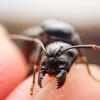
|
0 user(s) are reading this topic
0 members, 0 guests, 0 anonymous users



